ADITI UTTĀNAPĀD: A Tale of Mā Lajja Gauri & Reverence For Menstrual Cycle in Bhārat
The nine forms of Mā Durga include Shailaputri, Brahmacharini, Chandraghanta, Kushmanda, Skandamata, Katyayini, Kaalratri, Mahagauri, and Siddhidhatri. Among these, the first five forms correspond to different phases in a woman’s life, with Brahmacharini presiding over puberty and menarche.
Total Views |
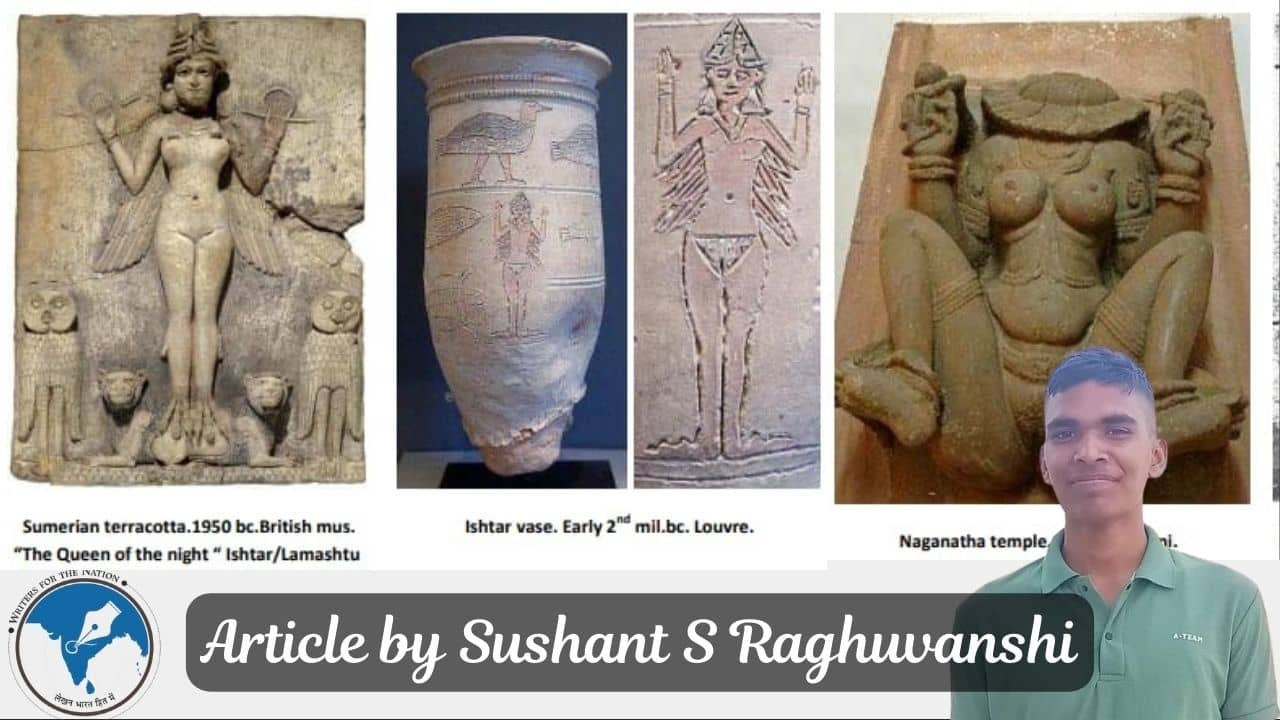
WHO IS GODDESS LAJJA GAURI?
Lajjā Gaurī is a lotus-headed goddess associated with abundance, fertility, and sexuality, sometimes euphemistically described as Lajja (modesty). Devi, the Great Mother Goddess of Creation from ancient Vedic times, takes the form of Lajja Gauri. She is also known by several other names, including Aditi, AdyaShakti, Renuka (the wife of Sage Jamadagni beheaded by Parashuram), Matangi, Yellamma (everybody's mother), Kotari, Kotavi (a nude folk goddess), KottaMahika, Kotmai, and many more.
The Rig Veda (I.89.10) describes Aditi as follows:
अदितिरद्यौर आदितिरन्तरिक्षहं आदितिर्मता स पिता स पुत्र
विश्वे देव आदितिः पञ्च जन आदितिर्जतं आदितिर्जनित्वम्
Meaning:
"Aditi is the sky - Aditi is the air - Aditi is all the gods - Aditi is the Mother, the Father, and Son - Aditi is whatever shall be born."
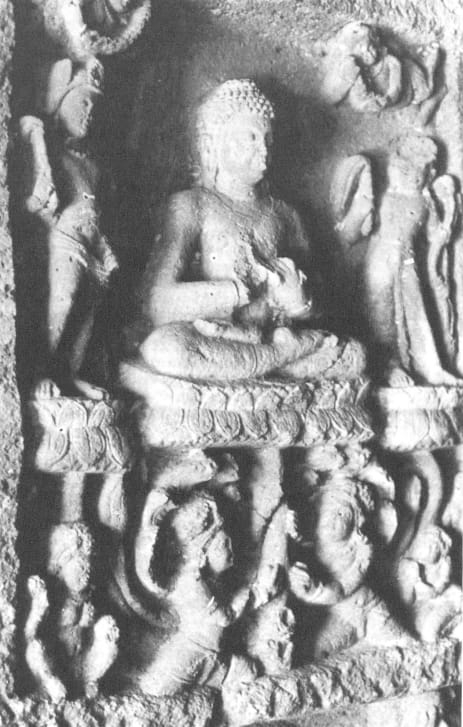
THE WESTERN LENS OF APPROPRIATING ORIENTAL SYMBOLISM
In the 19th century, British archaeologists, upon discovering these images, labeled them as indecent and erotic due to their euro-centric Victorian ideals of morality and femininity. However, Lajja Gauri, embodying modesty as her name suggests, is a form of Gauri, an aspect of Parvati, the consort of Shiva. This interpretation contrasts with the British view, which saw these images as representations of eroticism.
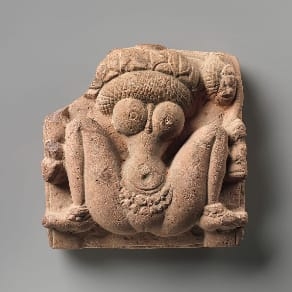
ADITI UTTĀNAPĀD: Another Name of Mā
The most elemental and symbolically potent representation of Lajja Gauri is as the birth-giving (uttanapada) pot goddess. This imagery, characterized by human legs in the uttanapada pose with a shape above the legs resembling both a pot and a female’s lower torso, signifies creation. The pot torso resembles a brimming vase, or purna kumbha.
The Rig Veda (X.72.3-4) states:
देवअं युगे प्रथमे.असतह सदाजयायत
अदास अन्वजयन्ता तदुत्तनपदस परि
भउर्जजना उत्थानपदो भुव असा अजाय
न्तादितेर्दक्षोअजायता दक्षद् वदितिः परि.
Meaning:
"In the first age of the gods, existence was born from nonexistence. The quarters of the sky were born from her, who crouched with her legs spread. The earth was born from her, who crouched with legs spread, and from the earth, the quarters of the sky were born."
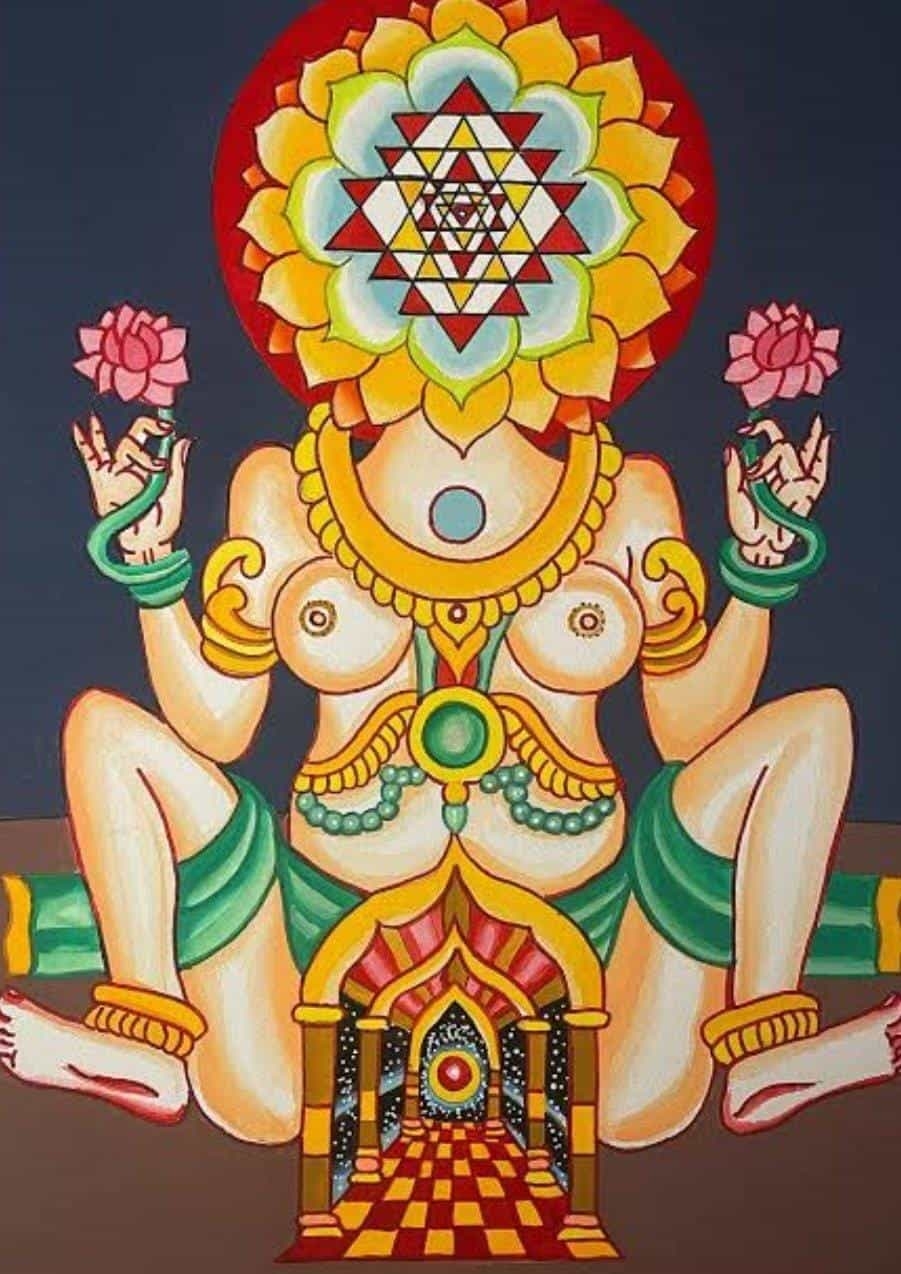
Metaphysical Meanings
The three paramount symbols associated with Mā are:
Lotus: In Indian art, the lotus symbolizes fortune, fertility, and reproduction. It represents the cyclic renewal of life, regeneration, and reincarnation.
Brimming Pot: Similar to the image of cornucopia, the brimming pot suggests affluence and abundant creative potential.
Srivasta: Srivatsa, a mark or sign of fortune, is represented in art with a whorl of hair, a triangle, or a cruciform flower. There is a relationship between the meanings of Lajja Gauri and Srivasta, establishing a kinship with Sri, Sri Lakshmi, and Gaja Lakshmi—all goddesses of well-being.
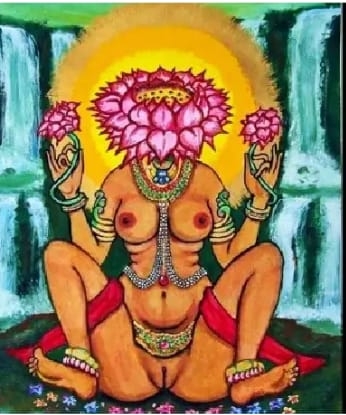
THE FORMS OF MĀ LAJJA GAURI: AS FOUND IN SCULPTURES
1. Lajja Gauri Lotus-Headed Without Arms: These figures have torsos extending to the shoulders, including the breasts, but lack arms or heads. The lotus is elevated to sit atop the shoulders.
2. Lajja Gauri Lotus-Headed with Arms: This form has a lotus head, an anthropomorphic female body with breasts, two raised arms holding lotus buds, and legs in the uttanapada pose.
3. Lajja Gauri in Complete Avatara: This anthropomorphic form features a human head, a full natural female torso, raised arms holding lotus buds, and legs in the birth-giving pose.
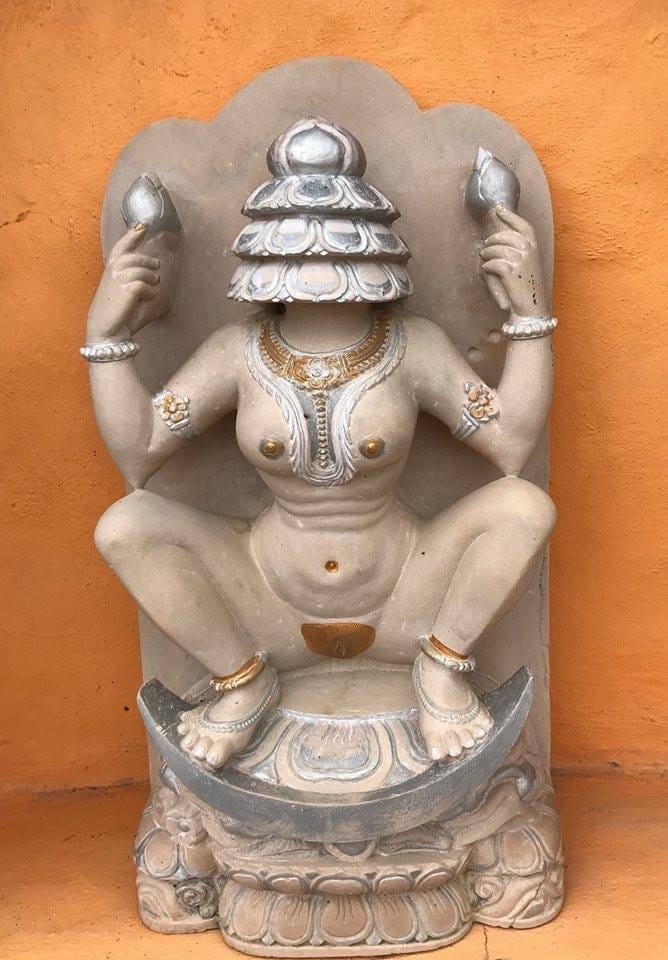
VEDIC SYMBOLISM OF THE MENSTRUAL CYCLE
Several deities, including Parvati, Lajja Gauri, Brahmacharini, Durga, Bhuvaneshwari, Kamakhya, Harchandi, and Bhoomi Devi, are associated with menstruation in the Hindu tradition. These deities represent different aspects of the primordial Shakti, the mother or originator of the universe. Menstruation is celebrated through worship and associated festivities.
The nine forms of Mā Durga include Shailaputri, Brahmacharini, Chandraghanta, Kushmanda, Skandamata, Katyayini, Kaalratri, Mahagauri, and Siddhidhatri. Among these, the first five forms correspond to different phases in a woman’s life, with Brahmacharini presiding over puberty and menarche.
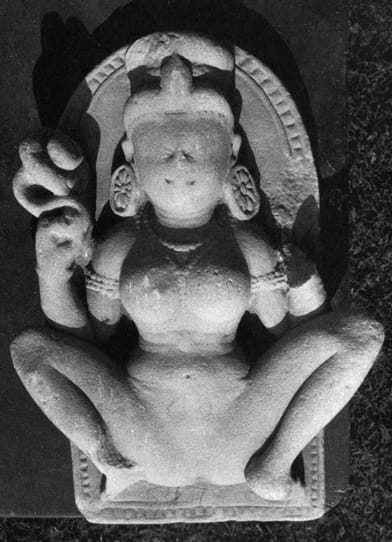
FESTIVITIES ASSOCIATED WITH RTU SRĀV
The menstrual cycle, regarded with sacred reverence in Bhārat, is celebrated through Rtu Vidya, a science developed around menstruation. In females, the reproductive phase begins at puberty and lasts until around 45-50 years of age. Menstruation, known as Rtu-Srv, occurs every 28-30 days, marking the cycle of fertility and renewal.
MĀ KĀMĀKHYĀ & AMBUBĀCHĪ FESTIVAL
The Kāmākhyā temple in Nilachal Hills, Guwahati, Assam, is the center of the Kulachara Tantra Marga. The temple is dedicated to Goddess Kamakhya, who is believed to menstruate annually for three days. During this period, the temple is closed, and all activities, including farming and daily worship, are halted to give the goddess rest. The festival, celebrated during the Assamese month of Ahaar (June), culminates with the distribution of holy water (Angodak) and the red cloth (Angabastra) used to cover the stone yoni during menstruation.
RAJA PARBA IN ODISHA
The Raja Parba festival in Odisha is a four-day celebration in mid-June, honoring the menstruating goddess Bhu-devi (Earth-Goddess). The festival includes various customs, such as wearing new sarees, swinging on rope-swings, and observing specific dietary restrictions. The final day, Basumati snana, involves bathing a grinding stone symbolizing Bhumi and offering seasonal fruits.
CHENGANNUR MAHADEVA KSHETRAM
The Chengannur Mahadeva Temple, dedicated to Shiva and Parvathy, celebrates a festival connected to the menstruation of goddess Parvathy, known as thriputharattu. The festival includes various rituals, such as the Devi's idol being taken to the Pamba River for aarattu (ritual bath) and a procession involving elephants, priests, and devotees.
RITU KALA SAMSKARAM
Ritu Kala Samskaram, also known as the half-saree function or Langa Voni, is a South Indian Hindu tradition celebrating a girl's first menstruation. The ceremony marks the transition from girlhood to womanhood, with the girl wearing a sari for the first time.
AS LANJA
Dr. Ramachandra C. Dhere's interpretation suggests that Lanja/Lanjika means 'naked', connecting it to the geographical area in Konkan (Maharashtra) called Lanja.
Article by
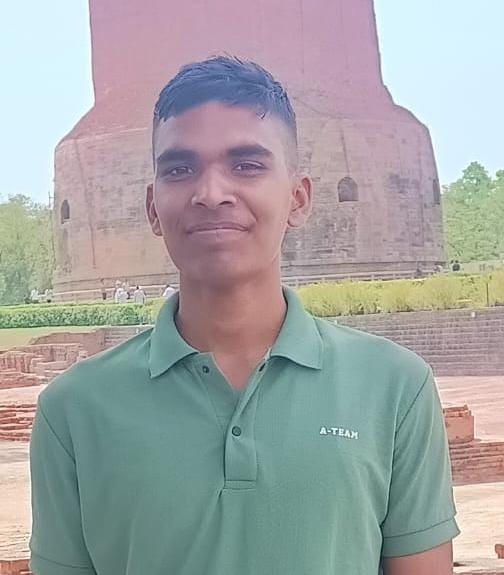
Sushant S Raghuvanshi
Columnist - Writers For The Nation
Kushbhawanpur, Uttar Pradesh

